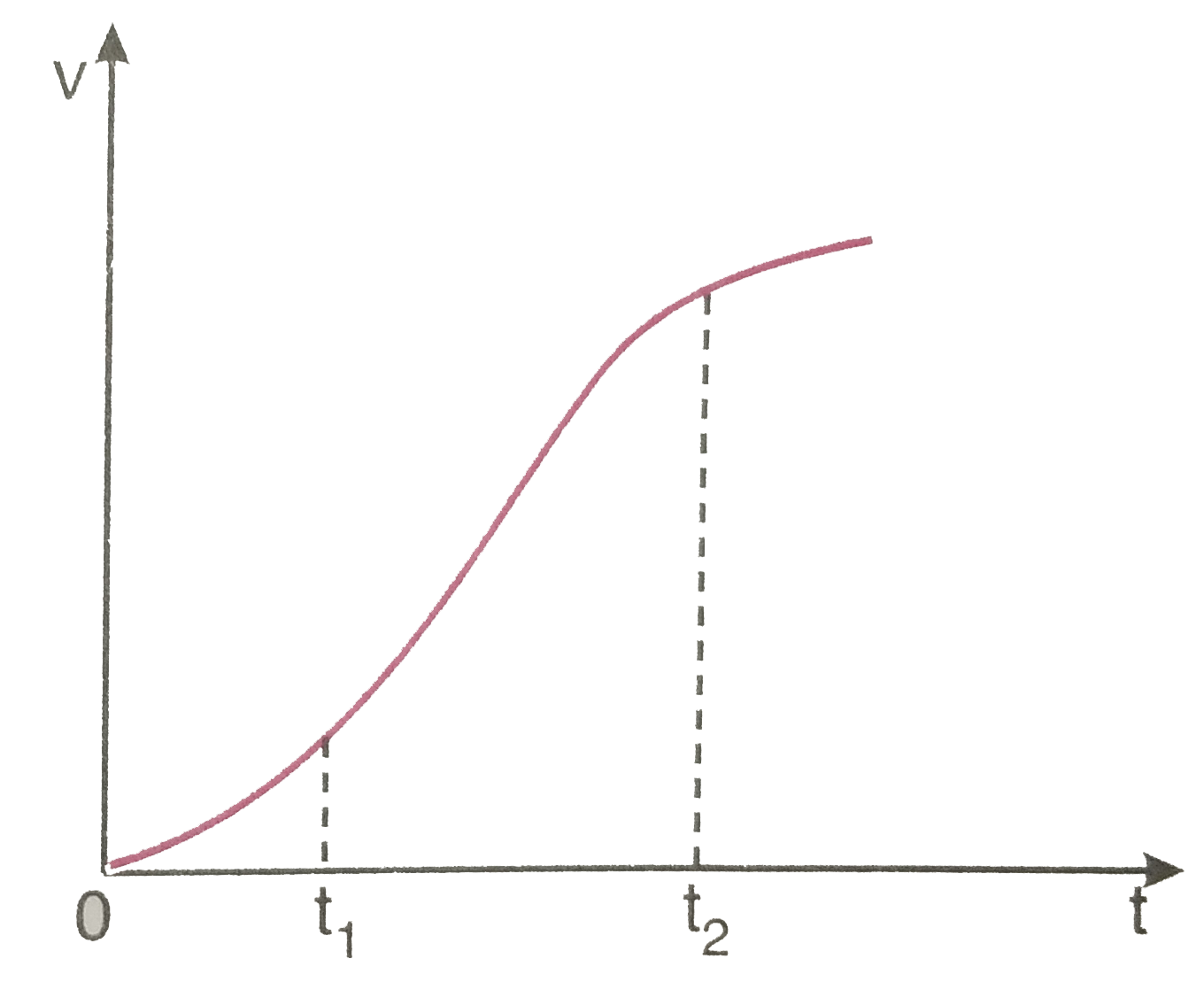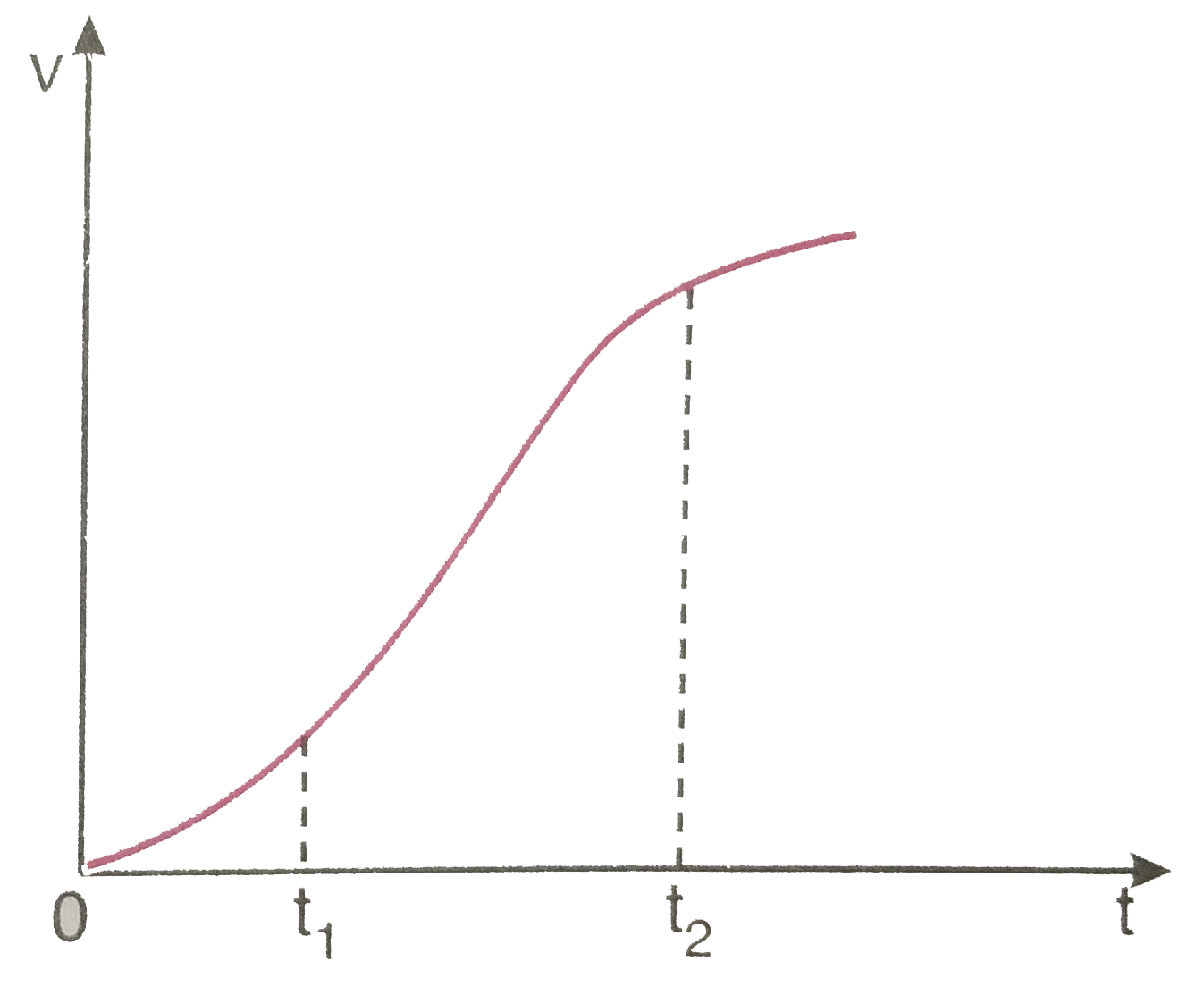The velocity of a particle is given by the equation, v=2t2+5cms−1 . Find
the average acceleration during the time interval betweent1=2sandt2=4s
.Solution in Tamil
Given v=(2t2+5)cms−1
Average acceleration
aav=v2−v1t2−t1=37−134−2
=12cms−2
Topper's Solved these Questions
- KINEMATICS BOOK - PREMIERS PUBLISHERSCHAPTER - KINEMATICS EXERCISE - Other important questions & answers (IV. Long answer questions).
34 Videos
- GRAVITATIONBOOK - PREMIERS PUBLISHERSCHAPTER - GRAVITATIONEXERCISE - OTHER IMPORTANT QUESTION & ANSWERS (CONCEPTUAL QUESTIONS)
34 Videos
- KINETIC THEORY OF GASESBOOK - PREMIERS PUBLISHERSCHAPTER - KINETIC THEORY OF GASESEXERCISE - OTHER IMPORTANT QUESTIONS & ANSWERS (VI. Conceptual Questions.)
8 Videos
Similar Questions
Define and illustrate the following terms.
Equal vectors.
View SolutionWhy a body weighs less at the equator than at the poles?
View SolutionWhen an automobile travels for a long distance , the air pressure in the tyres increases slightly . Why ?
View SolutionThe distance coverd by an object between times t_(1) and t_(2) is given by the area under the v-t gaph between t_(1) and t_(2) Prove this staement for an object moving with negative acceleration and gaving and having a positive velocity at time t_(1) and and negative velocity at time t_(2) .
View SolutionThe velocity of a paticle is given by the equation, v=2t^(2)+5cms^(-1) . Find (i) the change in velocity of the velocity of the particle during the time interval between t_(1)=2s and t_(2)=4s (ii) the average acceleration during the same interval and (iii) the instantaneous acceleration at t_(2)=4s .
View SolutionFor any arbitrary motion in space, which of the following relations are true?
(a) vaverage=(1/2)(v(t1)+v(t2))
(b) vaverage=[r(t2)−r(t1]/(t2−t1)
(c) v(t)=v(0)+at
(d) aaverage=[v(t2)−v(t1)]/(t2−t1)
The average stands for average of the quantity over time interval t1 to t2
View SolutionThe displacement (in metre) of a particle moving along X-axis is given by x=18t+5t^(2) . The average acceleration during the interval t_(1)=2s and t_(2)=4s is
View Solutionएक विमीय गति में किसी कण का वेग - समय ग्राफ चित्र 3.62 में दिखाया गया है नीचे दिए सूत्रों में t1 से t2 तक के समय अंतराल की अवधि में कण की गति का वर्णन करने के लिए कौन-से सूत्र सही है
v(t2)=v(t1)+a(t2−t1)

View Solutionएक विमीय गति में किसी का वेग - समय ग्राफ चित्र 3.62 में दिखाया गया है नीचे दिए सूत्रों में t1 से t2 तक के समय अंतराल की अवधि में कण की गति का वर्णन करने के लिए कौन-से सूत्र सही है
aaverage=[v(t2)−v(t1)]/(t2−t1)

View SolutionA particle move with velocity v1 for time t1andv2 for time t2 along a straight line. The magntidue of its average acceleration is
View SolutionThe velocity of a particle is given by the equation, v=2t2+5cms−1 . Find
the change in velocity of the particle during the time interval between t1=2sandt2=4s .
View SolutionThe velocity of a particle is given by the equation, v=2t2+5cms−1 . Find
the instantaneous acceleration at t2=4s
View SolutionThe velocity of a particle is given by the equation, v=2t2+5cms−1 . Find
the change in velocity of the particle during the time interval between t1=2sandt2=4s .
View SolutionThe velocity of a particle is given by the equation, v=2t2+5cms−1 . Find
the average acceleration during the time interval betweent1=2sandt2=4s .
View SolutionThe velocity of a particle is given by the equation, v=2t2+5cms−1 . Find
the instantaneous acceleration at t2=4s
View Solution
